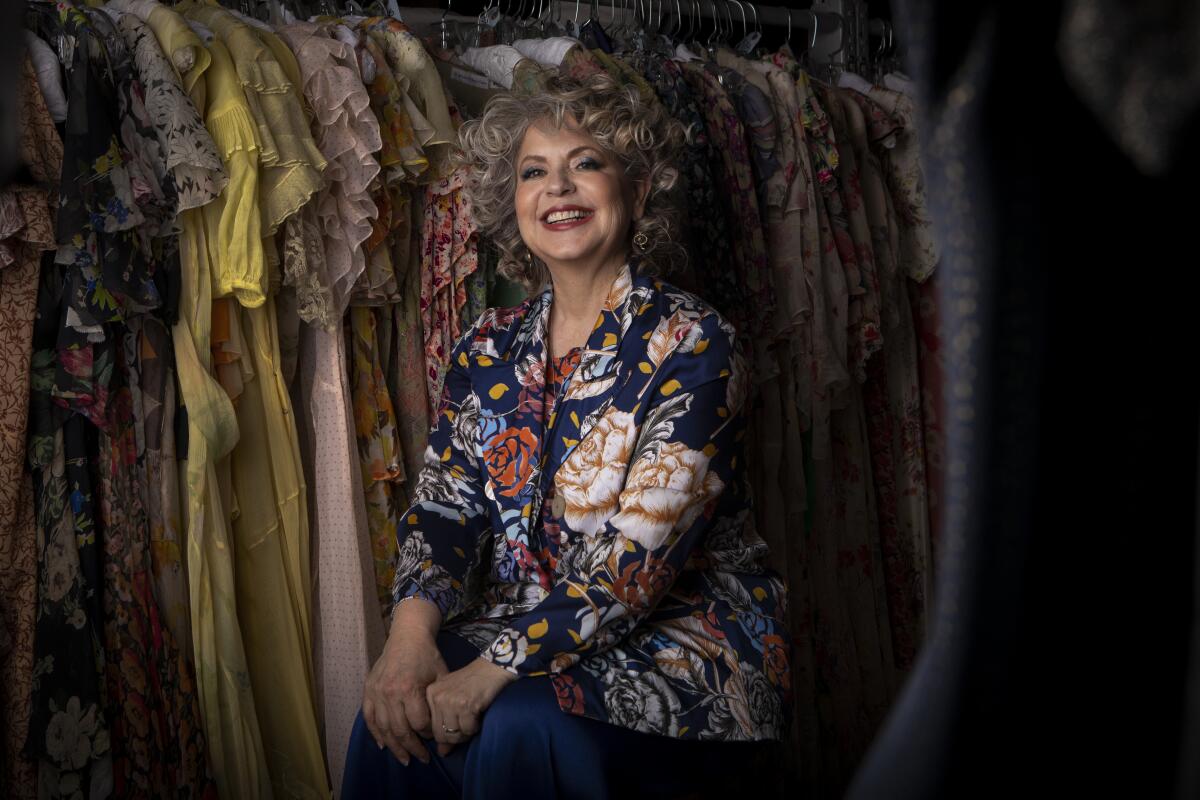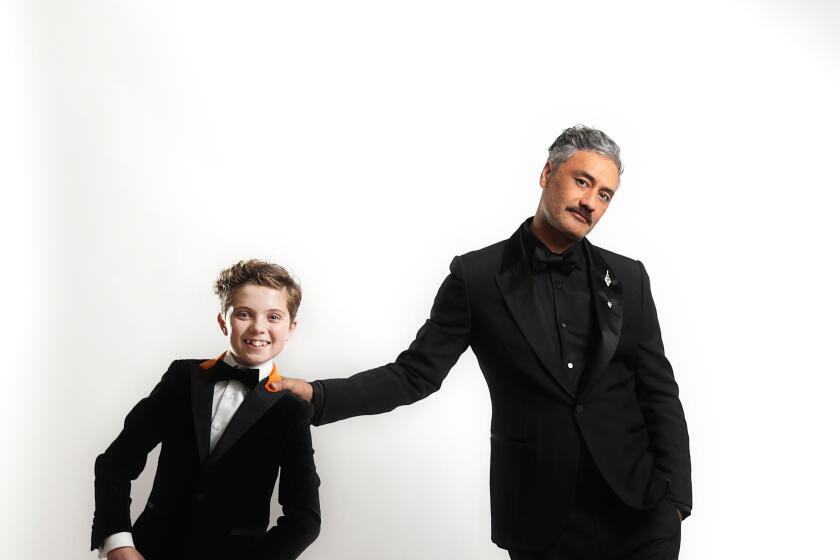‘Jojo Rabbit’s’ Mayes Rubeo ‘euphoric’ as first Latina costume designer to be nominated

- Share via
“I always try not to pay attention because I never get nominated for anything I do,” says Mexico City-born costume designer Mayes C. Rubeo of her decision to spend Oscar nominations morning working at her latest gig, Marvel’s “WandaVision.”
Then Rubeo, whose credits include eye-popping films like “Apocalypto,” “Avatar” and “Thor: Ragnarok,” noticed her phone was filling up with congratulatory texts from around the world. “I thought it was a prank,” she says about learning she’d earned her first Oscar nomination for her brightly colored, meticulously researched costume design in “Jojo Rabbit,” Taika Waititi’s wartime comedy-drama about a 10-year-old aspiring Nazi (Roman Griffin Davis) and his single mother (Scarlett Johansson).
Taika Waititi’s irreverent but humanist look at a boy in the Hitler Youth has been a major presence this awards season — for good and bad.
This will put her forever in the history books as the first Latina ever to be nominated in that category. “I said, ‘No, no. It can’t be!’ then there were about five minutes of me saying, ‘Oh, my God...’” Since then, Rubeo has picked up nominations from BAFTA as well as the Costume Designers Guild. “I’m very happy, excited, euphoric. All of the above,” says Rubeo. “It’s a wonderful time for me.”
In “Jojo Rabbit” you had to design Hitler Youth uniforms, crook-bearing German “shepherds,” even a clowning, imaginary Führer. How did you approach such a substantial task on a modest budget?
My main home is in Trevi, Italy. I have my textile collection there. I have many pieces, some from the 18th century. Lots of really old Chinese textiles. Mexican embroideries, embroideries from Northern Europe. I was very happy to give it to the movie. I don’t want them on my shelf like a good wine. If I can contribute to the costume design of the movie, they can live forever. I love the project. And I love Taika Waititi.
Explain the scene where boys wander the streets dressed in cardboard robot costumes.
That actually happened. They were made by the Nazis so the [Hitler Youth] could help by collecting pieces of metal or whatever. Believe it or not, those were the most challenging [costumes to design]. It took lots of research and development. We had to create paper that would be thin on top and flexible. We were making these for 10-year-old boys [to wear]. They don’t like scratchy things.
You’ve said your earliest experiences — designing for indie filmmaker John Sayles on his micro-budget movies — were foundational. How so?
It gave me a lot of structure. There’s only so much money you have at your disposal to create something nice. [I went] from low-budget to medium-sized movies then to great big ones. Then back to “JoJo Rabbit,” an indie niche movie that had the potential to be a wonderful story.
According to your credits, after working on a TV movie called “The Librarian: Quest for the Spear” you leaped to “Apocalypto,” a sweeping, violent epic directed by Mel Gibson.
Yes. There’s a wonderful producer in Mexico named Anna Roth. She called me in Italy and said, “Mayes, there’s a wonderful project about the Mayans. I wonder if you’d like to speak to Mel Gibson.” I said, “I’d love to speak to Mel Gibson.” Then she put him on the phone and I froze. [laughs]
Then what?
He said, “Mayes, we have a ticket reserved for you to come to Veracruz, Mexico, [two days from now].” I did an incredible presentation. He said, “We’re not looking any further,” and I said, “I won’t disappoint you.” I felt like I was able to deliver Mel’s vision.
Which was?
It had to look real but it also had to have cinematic vision. If you wanted something more legit about the Mayans, maybe watch the Discovery Channel or National Geographic. We wanted to make a spectacle out of that particular culture with color and vision. That was my first super-big break. I almost died doing that movie. But I’ve got to tell you, it’s still getting me jobs.
What did you hope JoJo’s mother’s attire — red spectator shoes, geometric sweaters, feathered hats — said about her?
We liked to believe she was part of this super eclectic, wonderful group of artists. That not too long ago she was part of a theater company. Perhaps she was friends with [Italian fashion designer] Elsa Schiaparelli. The textiles she wears, maybe she got them from the wonderful artist that I was inspired by — Sonia Delaunay. She’s not very well known but she’s the cofounder of Orphism, the art movement derived from Cubism. [Delaunay] was so out there [when it came to] bold geometric textiles and [strong] colors. She’s the most important influence for me.
One last question: Will you be wearing a Mayes C. Rubeo original on the red carpet?
I’m designing my gown right now. I have black lace from Italy that has drawings of lions, like pencil drawings, on a dress. It’s a little bit postmodern with a flavor of Victorian lace. I’ve hired outside [tailors] to help me make the dress. I can design well — but I cannot sew to save my life.
More to Read
Only good movies
Get the Indie Focus newsletter, Mark Olsen's weekly guide to the world of cinema.
You may occasionally receive promotional content from the Los Angeles Times.











